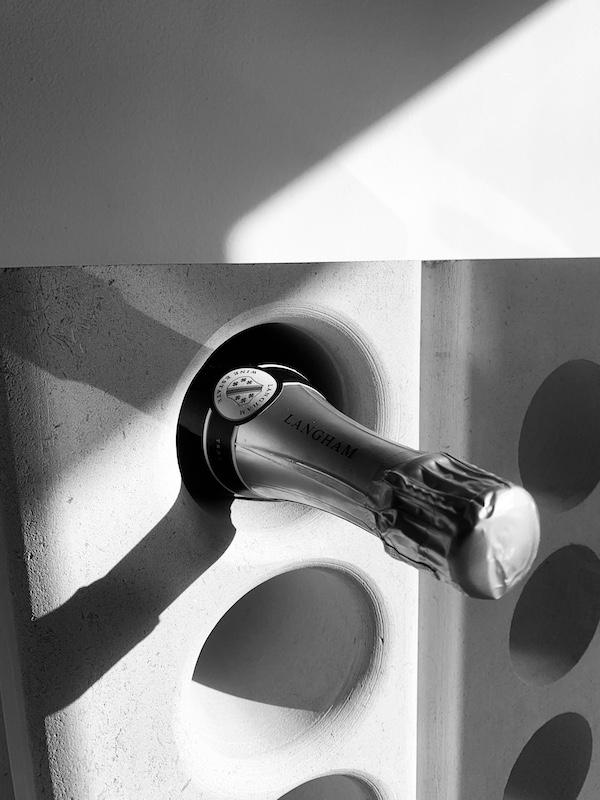PRODUCTS
Choose between my interior and exterior brands.

Interior Stone
Bespoke interior products hand crafted from the finest UK natural stone.


Stone for Gardens
Ethically sourced natural stone ornaments and water features.

Hand sourced and crafted Welsh Slate is what we’re famous for. This stunning natural rock is adored in homes and gardens across the UK for it’s lush blue grey tones.
Welsh Slate is a high-quality natural slate product found in the mountains of North Wales. It is a famous material that has been used for roofing, flooring, and other building applications for centuries. It has a unique blue-grey color and a distinctive, flat surface that makes it ideal for a range of different applications.
Welsh Slate has a rich history that dates back many centuries. The slate industry in the region began during the Roman era, and the first-known mining in the area can be traced back to the 1300s. In the 1800s, the slate industry in Wales hit its peak, with slate mines employing tens of thousands of workers in the region.
Over the years, Welsh Slate has been used for a wide range of applications. Its durability and strength make it ideal for use in roofing and flooring, while its unique appearance has made it a popular choice for decorative uses such as building facades.
Some of the most notable uses of Welsh Slate include the world-famous roofs of Westminster Abbey and St. Paul’s Cathedral in London, as well as the iconic blackboards used in schools across the UK. It is also used for landscaping, cladding, and other decorative applications.
Despite the decline of the slate industry in Wales in recent years, Welsh Slate continues to be a highly sought-after material. Its aesthetic appeal, durability, and strength make it a popular choice for architects, builders, and homeowners alike.
In conclusion, Welsh Slate is a remarkable natural material that has been used in building applications for centuries, from roofing to flooring and beyond. Its durability, strength, and distinct appearance make it ideal for a range of different uses, while its rich history in the region adds to its timeless appeal. Despite the challenges faced by the Welsh slate industry in recent years, Welsh Slate continues to be a sought-after material, valued for its quality and versatility.
Portland Stone is a wonderful contrast to Welsh Slate, with it’s creamy Cotswold home colours and more subtle texture it’s perfect for modern homes & gardens.
Portland Stone is a type of limestone that has been extracted for centuries from the Isle of Portland in Dorset, England. Its distinctive creamy white colour and soft texture make it a popular choice for building and has been used for many famous buildings and landmarks, both in the UK and abroad. Its history dates back to the Roman times when it was used for building many of their significant structures.
The first record of the extraction of Portland Stone dates back to the 17th century when it was used for the new St. Paul’s Cathedral in London. Over the years, it has been used for many other notable buildings and structures such as the Tower of London, Buckingham Palace, and the United Nations headquarters in New York.
Portland Stone has been admired for its durability and its ability to age well. Its soft texture makes it easy to carve, and its uniform grain allows it to be sawed into thin layers, making it a popular choice for ornamental work. It is also known for its high-quality appearance and has been used for sculptures, memorial stones, and even furniture.
The mining of Portland Stone has had a significant impact on the economy of the Isle of Portland, providing employment and helping to shape the local community. Portland Stone quarrying has also had a significant environmental impact, with quarries leaving large holes in the landscape that have become popular with wildlife and tourists.
Today, Portland Stone continues to be used for many applications. Its popularity as a building material has continued due to its unique and elegant appearance, as well as its durability. It is still used for ornamental work, sculptures, and memorials, and its consistency and uniformity make it a popular choice for flooring and cladding.
In conclusion, Portland Stone is a unique and distinctive material that has been used for centuries. Its history, durability, and aesthetic qualities have made it an important building material, and its impact on the Isle of Portland has been significant. Today, its applications continue to evolve, and it remains a popular choice for a variety of construction and decorative projects.
For those seeking out the finest options available, Italian Marble is as luxurious a natural stone as one could hope to find to enhance any interior or exterior design.
Italian marble is one of the most luxurious and sought-after building materials in the world. It is known for its stunning aesthetics, durability, and versatility, making it a favourite among architects and designers alike. Let’s take a closer look at the history and applications of Italian marble.
Italian marble has a rich and fascinating history that dates back to ancient times. The Romans were the first to use marble in architecture, and they quarried the stone from the mountains of Carrara in Tuscany, Italy. The marble found here was used to build some of the most iconic structures from antiquity, including the Pantheon and the Coliseum.
During the Renaissance period, Italian marble saw a resurgence in popularity as it was used to decorate the most lavish buildings and palaces in Europe. Michelangelo, one of the most famous Renaissance artists, was known to use Italian marble for his sculptures such as David, Pieta, and Moses.
Italian marble has been used for a variety of architectural applications throughout history. Some of the most popular applications include:
Flooring: Italian marble is a popular flooring material used in both residential and commercial buildings. It is known for its durability, resistance to wear and tear, and it’s luxurious look and feel.
Countertops: Marble countertops are also popular in kitchens and bathrooms, due to their durability, resistance to stains, and ability to withstand high temperatures.
Sculpture: As mentioned earlier, Italian marble has been used for sculpture for centuries. Its malleable nature and ability to hold intricate details make it a go-to material for artists and sculptors.
Building facades: Italian marble is also used in the façades of buildings, adding a touch of elegance and sophistication to the overall look of the building.
Italian marble holds a special place in the history of architecture and design. Its stunning aesthetics and remarkable durability have made it a favourite building material for centuries, and it continues to be a popular choice among architects and designers today. Its versatility and ability to add elegance and sophistication to any project make it truly a remarkable stone.
